Pansy leaves will turn brown if the are older leaves near the base of the plant, if the plant is overfertilized, affected by fungal growth or if they are being attacked by chewing insects. Pansies will start to turn brown during the hottest months when they can suffer from sunburn.
This article will explore why pansy leaves turn brown and what you can do to prevent each problem easily at home.
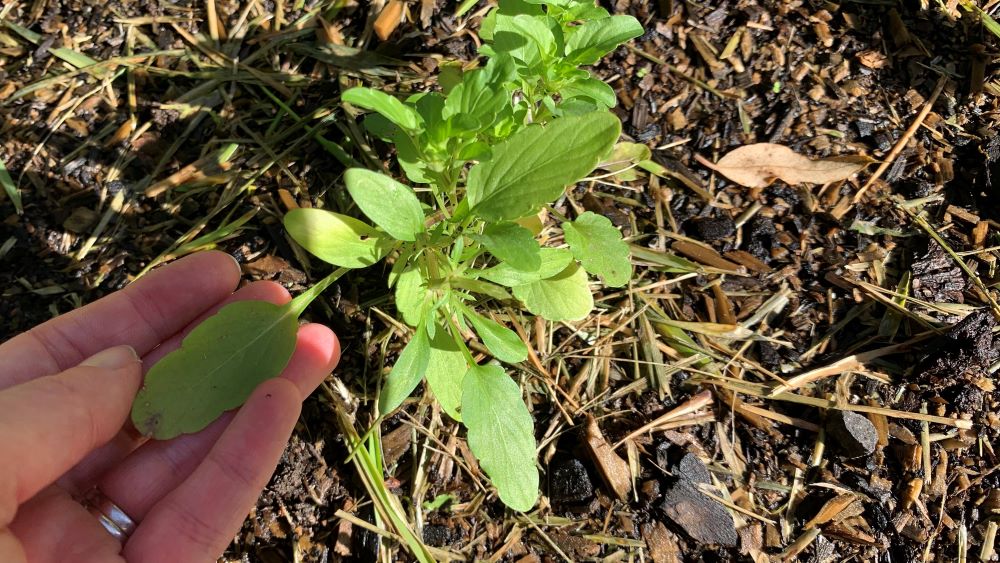
8 Reasons pansy leaves turn brown
Here are the top reasons why pansy leaves turn brown and how you can solve each one quickly and easily.
1. Old Leaves
The most common reason why pansy leaves turn brown is due to the age of the plant. Pansies grow well from fall through winter to springtime. As the plant grows old leaves can start to turn brown at the base.
These will be quickly replaced by new, green leaves higher up on the pansy plant. You can trim old leaves off or give the plant a trim all over to promote new growth.
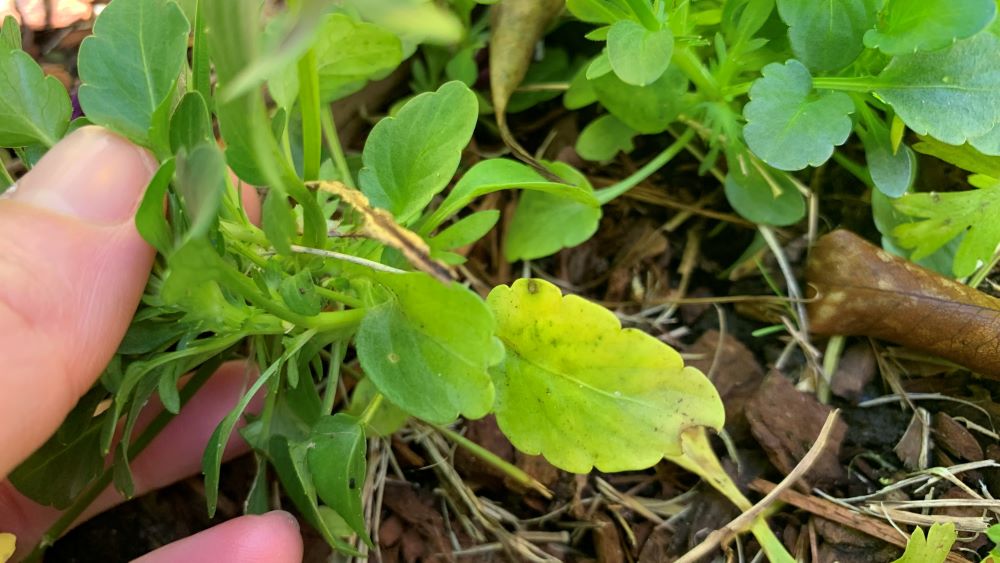
2. Sunburn
Sunburn is another common reason why pansy leaves turn brown. These plants prefer mild weather so when it gets too hot or the sun is too strong the leaves can burn.
It is best to leave brown and sunburn leaves on the plant. This can help to protect the new leaves from burning. If the hot weather has passed, you can prune the plant lightly to make room for new growth.
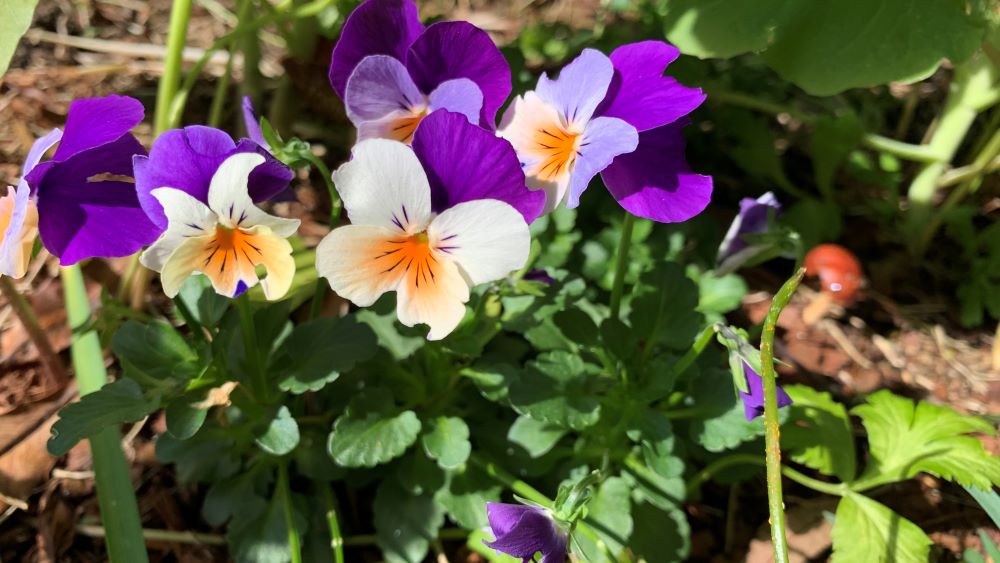
In warm climates pansies will naturally die back over summer. You can let the flowers set seed and collect them to grow the next year.
I like to grow violas each year. I will collect seed or let them drop on the ground to pop up in the next fall.
3. Fungus
Brown leaves on pansies can be caused by fungal growth. This is more likely to happen to leaves close to the ground as the soil and fungal spores are splashed onto the leaves. This can lead to black dots or browning leaves over time.
Fungus can be treated with a copper based fungicide spray. You can also trim off affected leaves so the problem does not spread.
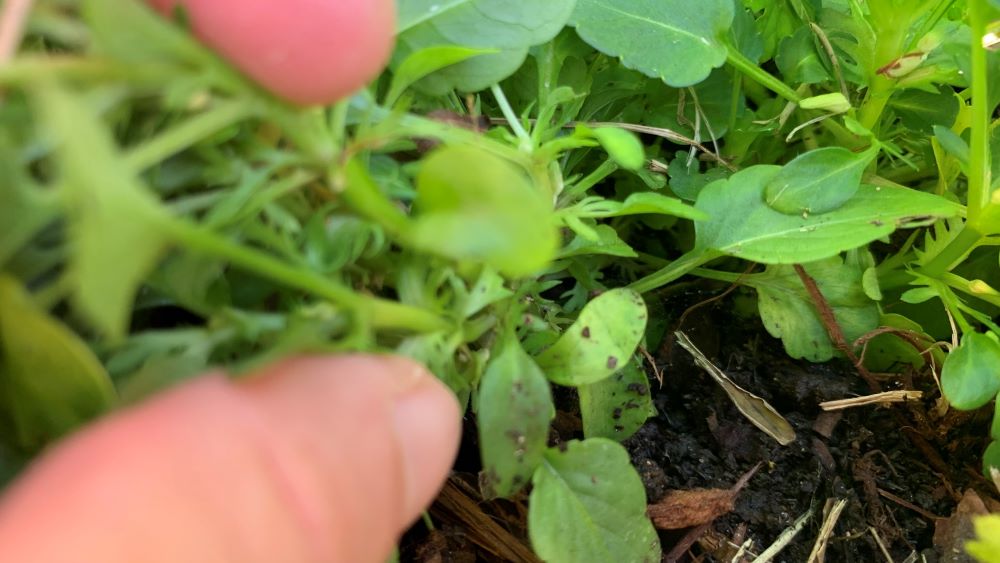
Placing mulch around the pansy plants is a great way to keep soil off of the leaves. Water gently to avoid splashing soil and fungal spores on the plants. Healthy plants will also be more resistant to fungal attack.
Fertilize the plants with pelleted chicken manure and water them regularly.
4. Fertilizer burn
Fertilizer burn can cause pansy leaves to turn brown. Adding too many minerals or key nutrients can cause the plant to develop brown leaves from the tips down.
Synthetic fertilizers with high amounts of concentrated nutrients can cause burn. Young or newly transplanted pansies are more susceptible to this damage.
Feed your pansies with pelleted chicken manure around 4 weeks after planting. You can add pelleted chicken manure again 2-3 months later to top up nutrients in the soil.
5. Salty water
Pansies that are being watered with salty water or water that is high in other minerals can develop brown leaves.
This often happens if you are using bore water or if your town water is sourced from smaller dams. High concentrations of minerals can build up in the plant causing browning of the leaves.
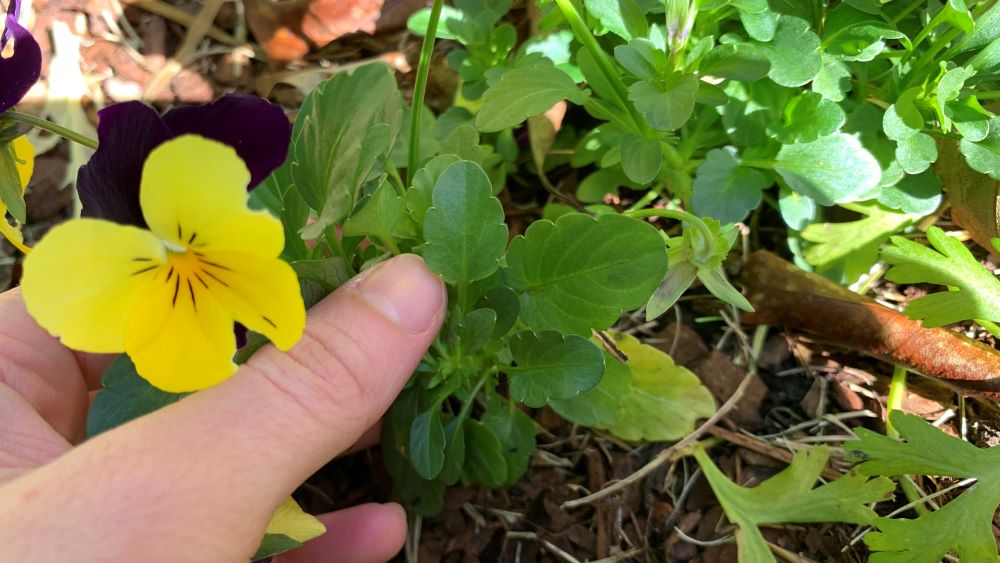
To fix this problem flush the plant out with fresh water. Collect rainwater if you can and water the plant deeply. Potted pansy plants can be flushed out with distilled water. Wash the plant through until the water drips out the bottom of the pot.
6. Chewing and sap sucking pests
Pests including caterpillars love to chew on pansy leaves. They can often be found sitting on the leaves during the day and chewing holes in the leaves and flowers. This will cause the leaf edges to turn brown and eventually die back.

Other pests that can attack pansy include beetles, aphids, caterpillars, moths, thrips and scale.
Treat sap sucking insects on pansies with neem oil. This natural oil extract can be sprayed on the leaves and bugs and will get rid of them quickly.
I will flick caterpillars off with a small spade so I don’t touch them. This will also work for snails and slugs which can be flicked into a soapy bucket of water or fed to your chickens.
7. Underwatering
Underwatered pansies can quickly develop brown leaf edges and tips. Pansies need regular water over fall, winter and spring and hate drying out.
Make sure you water new pansy seedlings regularly until they are at least 2-3 inches high. By then their roots will have reached down further into the soil and can last longer between watering.
Surround the pansies with 2 inches of bark mulch to keep the water in the soil for longer.
8. Lack of nutrients
Pansies that are not getting the nutrients they need can suffer and their leaves can turn brown.
These plants need iron, nitrogen, phosphorus, potassium and calcium to name a few to grow strong and develop healthy leaves. A lack of any specific nutrient will weaken the plant, making them more prone to pest attack and they can develop brown leaves.
Before planting pansies improve the soil with composed cow manure and compost. Feed them with pelleted chicken manure 4 weeks after planting.
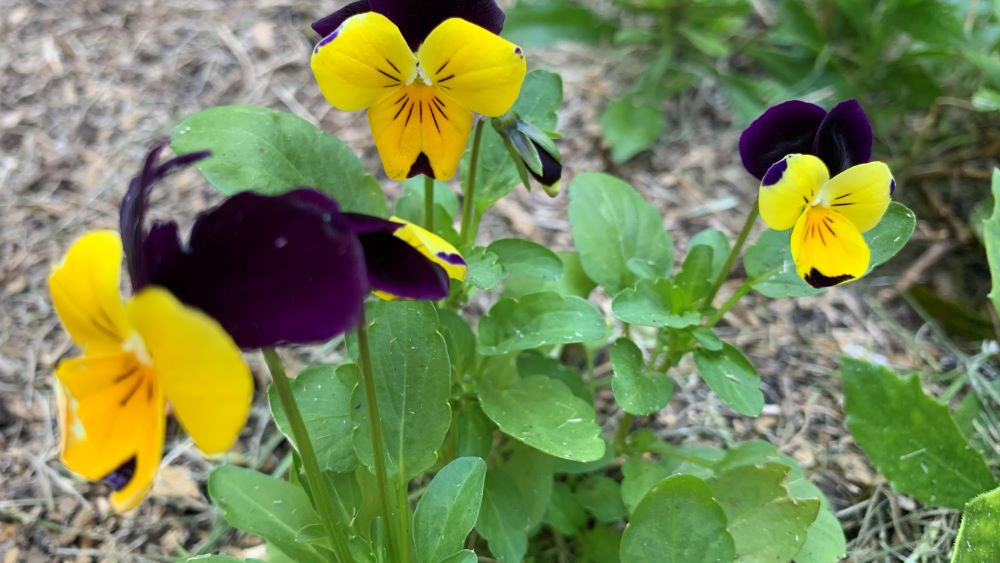
You can also feed with a flower promoting fertilizer high in phosphorus when you see the first buds appear. This will encourage more flowers over winter and spring.
Check out this great video for more on caring for pansies.
Pansy Leaves Turning Brown | Summary
Pansies look great in your garden and can brighten it up over winter and spring. Improving the soil with organic matter before planting is a great way to keep them healthy and resistant to pest attack. Water regularly, surround them with mulch and feed them 4 weeks after planting to prevent brown leaves and grow loads of flowers.
Pansies are a beautiful plant that I grow every year. Check out the new color ranges and try some in your garden.
Happy growing.
I am an accredited practicing dietitian, experienced gardener and a dedicated cook. I love writing and sharing my experience so you can learn from my successes and mistakes.
